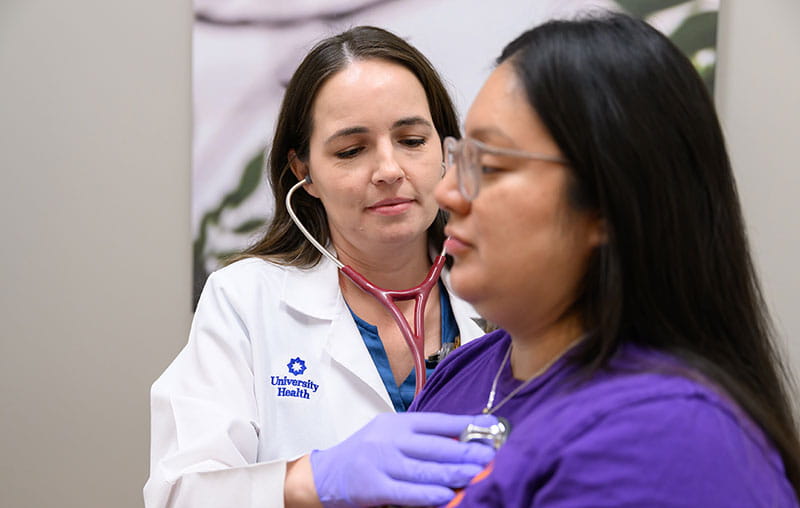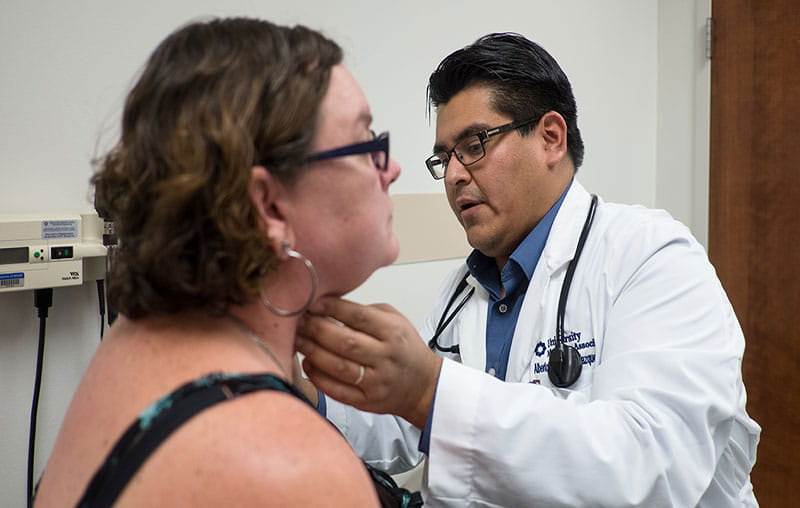If you had to name the most important part of your body, you might say it’s the heart. After all, the heart is responsible for pumping blood to other parts of the body.
What you might not realize is the heart can’t function without nutrients and oxygen delivered through the coronary arteries. These arteries, which are blood vessels on the surface of the heart, are responsible for supplying the heart with oxygen-rich blood.
When the coronary arteries become blocked, the heart muscle doesn’t get the oxygenated blood it needs. In turn, it can’t function well, limiting its ability to pump blood to the rest of the body. This lack of oxygen can cause patients to feel chest pain and can weaken the heart’s pumps.
Importance of Good Artery Health
Arteries are blood vessels that carry blood from the heart to the rest of the body. The blood traveling through the arteries contains oxygen and nutrients, supplying those essential substances to your organs and tissues.
These blood vessels are one part of your circulatory system, which also contains veins, blood vessels that carry oxygen-poor blood back to the heart.
The arteries are generally quite strong. They have elastic walls so that they can withstand your blood pressure — the force with which your blood hits the walls as it moves through the arteries.
Sometimes, however, plaque builds up in your arteries. This is a condition called “atherosclerosis,” and it’s quite common. Plaque is made up of fat, cholesterol, blood cells and other substances found in blood. It’s sticky, and over time, it can accumulate along the artery walls.
Risks of Unhealthy Arteries
As plaque builds up in the arteries, it increases your risk of many serious health issues, including both heart attack and stroke. There are a couple reasons for this.
For one, atherosclerosis causes the artery walls to narrow, which cuts off the flow of oxygenated blood. Less commonly, the plaques can burst, causing small clots to form and move through the bloodstream and cause a bigger clot that blocks blood flow entirely.
Worried about your heart health? Learn more about our Structural Heart and Valve Center.
What Is Coronary Artery Disease?
Atherosclerosis can develop in arteries anywhere in the body. It has several different names depending on where it develops. When plaque builds up in the coronary arteries, which supply blood to the heart, it’s called coronary artery disease.
Coronary artery disease (CAD) is the most common type of heart disease, affecting approximately 1 in 20 adults in the United States. It’s also the leading cause of heart attack.
A heart attack occurs when blockages in the coronary arteries partially or completely cut off blood flow to the heart. This leads to ischemia, a lack of oxygen, which causes heart tissue to become damaged or die off.
Risk Factors for CAD
Many people in the United States have at least one risk factor for coronary artery disease. Are you at risk? Risk factors include:
- Diabetes
- Family history of heart disease
- High blood pressure
- High low-density lipoprotein (LDL) cholesterol
- Inactive lifestyle
- Kidney disease
- Obesity
- Smoking
The risk of developing CAD increases as you get older. Men are at a higher risk beginning at age 45, while women are at a higher risk beginning at age 55.
It’s important to note, though, that coronary artery disease is increasingly being diagnosed at a younger age, including younger adults.
CAD Symptoms
If you’ve ever read a list of heart attack symptoms, you’ll notice that many of the symptoms are similar to those caused by coronary artery disease. Symptoms of CAD can include:
- Chest pain, pressure or tightness
- Shortness of breath
- Cold sweats
- Dizziness or lightheadedness
- Fatigue
- Heart palpitations
- Nausea and vomiting
- Pain in the neck, jaw, back or abdomen
Because these symptoms can be related to a heart attack, it’s important to seek prompt medical attention if you experience them.
If a medical provider determines you have coronary artery disease, treatment can keep you from having a heart attack.
Treatment Options for Coronary Artery Disease
If you’re diagnosed with CAD, your provider may suggest heart-healthy lifestyle habits as part of your treatment plan. Maintaining a healthy diet filled with fruits and vegetables, exercising regularly, not smoking, limiting your alcohol consumption and getting enough quality sleep can help you prevent future plaque buildup in the arteries.
Along with lifestyle changes, you may also need to take medications to protect your heart. This can include medications to mitigate certain risk factors for coronary artery disease, such as beta blockers to lower your blood pressure, along with medications to reduce the risk of clots.
If your provider believes you have plaque buildup in the coronary arteries, you may undergo a procedure known as cardiac catheterization. A cardiac catheterization can be both a diagnostic test and a treatment, allowing a cardiovascular specialist to open blocked arteries using specialized tools and place stents to keep them open.
If a cardiac catheterization reveals you have more substantial blockages, you may need a surgical procedure called a coronary artery bypass graft. During this procedure, known as a CABG, a surgeon opens the chest and uses a healthy blood vessel from another part of the body to create a “bypass” around blocked arteries.
Is There a Connection Between Coronary Artery Disease and Peripheral Artery Disease?
We mentioned above that atherosclerosis has different names in different parts of the body. Coronary artery disease is atherosclerosis affecting the coronary arteries, while peripheral artery disease is atherosclerosis affecting the peripheral arteries.
The peripheral arteries are responsible for carrying blood away from the heart and to the rest of the body. When these arteries become blocked by plaque, it can cause severe symptoms affecting the legs. These symptoms can include leg pain with walking and, in more severe cases, gangrene, a type of tissue death that can lead to amputation.
Like CAD, peripheral artery disease (PAD) is common, affecting millions of people in the United States. Being diagnosed with PAD puts you at risk of developing CAD.
The two conditions share risk factors, so if you have peripheral artery disease, you’re also at risk of coronary artery disease. That means that making heart-healthy lifestyle changes like the ones noted above can also reduce your risk of developing serious arterial blockages elsewhere in the body, including the legs.
Heart & Vascular Care at University Health
When your heart is at stake, you want the care of a team of experts.
You’ll find that at the University Health Cardiovascular Center, where a multidisciplinary team of providers offers specialized care for a full range of heart and vascular issues.





